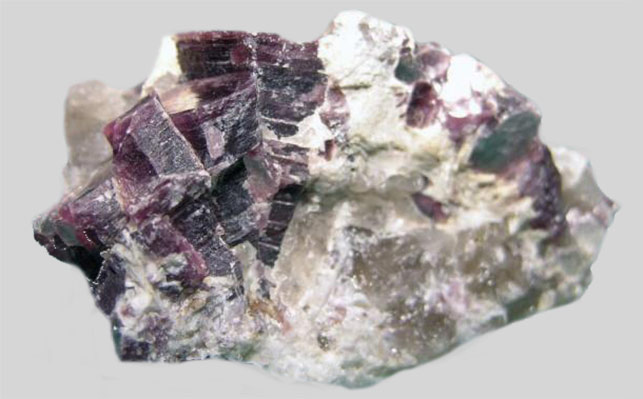
15311826613
Click to add WeChatWith the rapid rise of new energy, lithium as the main source of lithium batteries has led some investors to turn to the lithium mine market. Among them, lithium mica is a kind of lithium resource and is also worth developing. The common methods are lime roasting, sulfuric acid roasting, sulfate roasting, chlorination roasting and pressure cooking. The following editor will take you to understand the characteristics and advantages and disadvantages of these lithium mica lithium extraction methods.

The limestone sintering method is to mix mica with limestone, then grind it finely, and roast it at 940~1050℃. During the process, lithium minerals can be converted into water-soluble compounds. After roasting, the lithium minerals are extracted by water immersion at room temperature.
This lithium extraction method has a simple process, low cost, and easy to obtain raw materials. It can be directly used to produce lithium carbonate products. However, due to the high roasting temperature, the process consumes a lot of energy and is prone to serious secondary pollution.
The method of lithium extraction by sulfuric acid roasting is to roast a certain amount of lithium mica and sulfate at 150~300℃, and then roast the product again at 800℃. During the roasting process, the lithium in the lithium mica is converted into easily soluble lithium sulfate, and then leached under normal temperature water to obtain lithium resources.
This process is highly versatile and can decompose various lithium-containing minerals. During the process, the aluminum in the lithium mica will hardly be replaced. However, the energy consumption is high, the amount of slag is large, rubidium and cesium are lost, and there will be more fluorine and sulfide waste gas volatilization during the high-temperature roasting process, which is more environmentally polluting.
The sulfate roasting method is to use sulfuric acid to react with lithium mica, hydrogen ions replace lithium ions, generate soluble lithium sulfate, and then soak it in warm water. After purifying impurities, carbonate is added to react again to obtain lithium carbonate products.
This lithium extraction method does not require high-temperature roasting, has low energy consumption, and small amount of waste slag. However, this method has high requirements for the fineness of lithium mica, and the leaching reaction time is long, and the consumption of potassium salt is large.
The lithium extraction by chlorination roasting is to mix lithium mica with chloride (sodium chloride or calcium chloride, etc.) in a certain proportion and grind it. After reaching a certain fineness, it is roasted at 900~950℃ to convert lithium minerals and other valuable metals into soluble chlorides, and then leached to obtain lithium solution.
This method can improve the conversion rate of lithium, with high recovery rate, short reaction time and less waste residue. However, during the roasting process, due to the serious corrosion of chloride ions on instruments and equipment, the anti-corrosion requirements are relatively high, and there are major problems with environmental protection.
The pressure cooking method is to first roast the lithium mica for defluorination, and then wet grind it in a certain proportion with sodium carbonate. After reaching the appropriate fineness, it reacts at >200℃ and 0.2~2MPa pressure, and the sodium ions can effectively replace the lithium ions. The replaced lithium ions enter warm water for leaching. During the process, carbon dioxide needs to be introduced into the water to convert lithium carbonate into soluble lithium bicarbonate. After solid-liquid separation, lithium bicarbonate solution is obtained, and lithium carbonate products are obtained after heating and decomposition.
This method is simple, with a small material flow, small equipment corrosion, low energy consumption, and will not generate a large amount of low-value by-products. However, the process consumes more carbon dioxide.
The above is an introduction to several different methods of lithium mica extraction. Each process has its own characteristics, but in the actual mineral processing plant, how to choose the process depends on the properties of the lithium mica ore. Therefore, the editor recommends that a mineral processing test analysis be carried out first, and the process is tailored through the data to obtain a more ideal recovery rate.